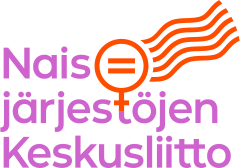Dear Collagues,
I am truly grateful to be given this platform. It is good to be a part of this event that reflects on Finland’s role in international intervention in Afghanistan, particularly in the context of women’s rights. It is particularly encouraging as Afghan women’s voices feature so prominently in this important reflection.
Today, I want to speak about three areas where some progress, although fragile, was made for women’s rights in Afghanistan in the context of international intervention, and also some major shortcomings and mistakes and lessons learned from the women’s rights journey of Afghanistan in the past over 2 decades. But first, some history and historic tensions:
- Human rights journey of Afghanistan did not start in 2002, longer history of struggle. Some of it top down (Amanullah Khan Reforms 1919-1923) and some more collaborative with prominent role from intellectuals and activists (1963-1973 when elections were introduced, limiting powers of the royal family and there was some space for freedom of expression and assembly. Post 2001 and heavy international community and donor engagement, and now a new era
- There were also attempts to discredit human rights and women’s rights efforts throughout our recent history: These efforts, particularly the struggle for gender equality was linked to external interventions and seen as an outside agenda.
The post 2001 women’s rights journey in Afghanistan:
- Main achievements: 1) Improved legal framework: New Constitution (inspired by 1963 but further expanded rights particularly emphasis on equality of all citizens before law regardless of gender), new and improved laws and policies, increased human rights commitments of the state, these were outcomes but also processes ie consultations around the constitution, draft laws and creating space for independent entities such as the Afghanistan Independent Human Rights Commission (AIHRC) and the civil society. 2) Creation of institutions and structures, in the government, state and in civil society to implement and protect women’s legal rights: AIHRC, Elimination of Violence Against Women units, women-led civil society organizations, independent media with women as journalists and staff 3) Increased public engagement and consciousness: social and cultural change, “trainings” for people in gov and outside, media, publications, social media and public discourse around women’s rights
- Main challenges and shortcomings:
- The pace of changes in law that were not always organic and did not bring enough people along, created a conversation
- Institutions: remained donor focused that limited their effectiveness for instance resources and time was spent on “quantifiable” outcomes such as number of people trained on women’s rights
- Public discourse: Happened in the context of ongoing conflict, corruption, silencing of activists and media through terror, misinformation,
- A broader theme: Coupling of war on terror and a human rights/women’s rights narrative. Culture of impunity that disregarded voices of victims owing to mainly prioritizing the “war on terror” objective. This manifested itself in many ways, some examples: Bonn Agreement and superficial attention to dealing with the past. Ongoing civilian harm by international forces and their allies and lack of accountability. Doha “Peace Process” and absolute disregard for the voices and demands of Afghan women rights activists
What now:
- The human rights situation is horrific, particularly for women who have lost all rights and freedoms in Afghanistan. Civic space has literally closed. De facto authorities are not recognized. International community is lost on how to engage with the Taliban. Where do we go from here?
- Continued monitoring and advocacy
- Keeping the movement for women’s rights alive through funding women’s rights organizations in exile and inside Afghanistan
- Supporting Women Human Rights Defenders at-risk both financially and with resettlement
Thank you.
